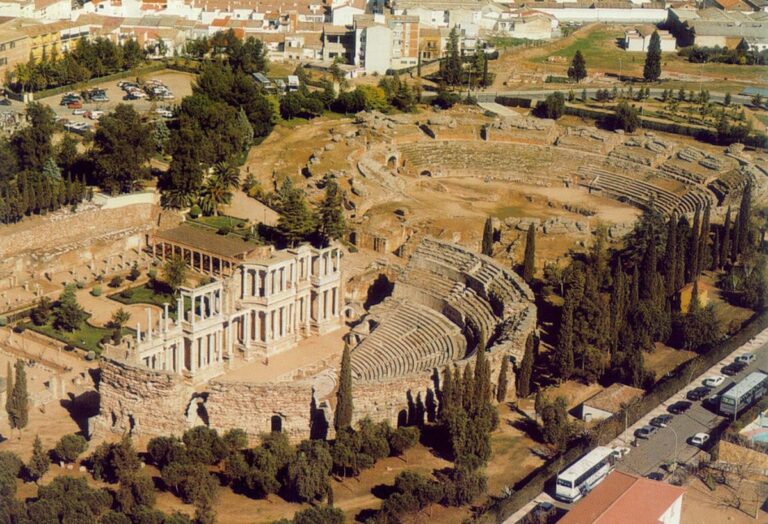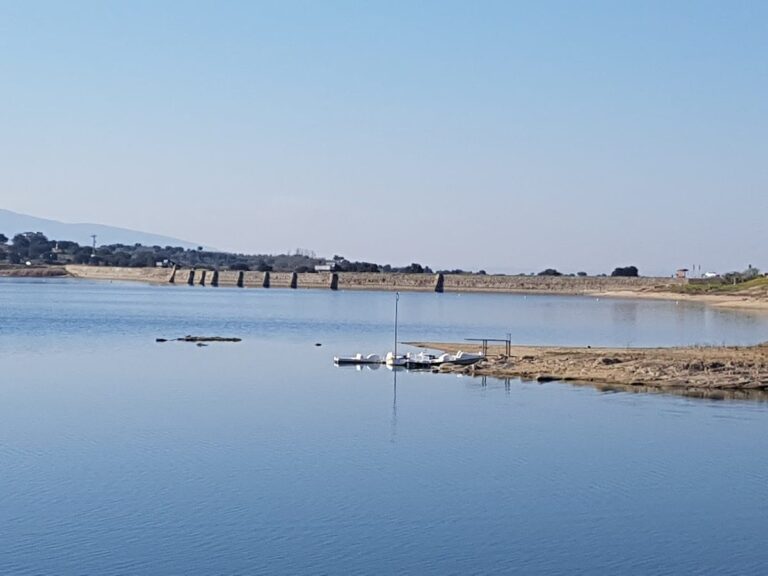Albarregas Roman Bridge in Mérida: An Ancient Roman Crossing in Spain
Visitor Information
Google Rating: 4.6
Popularity: Very Low
Google Maps: View on Google Maps
Official Website: www.consorciomerida.org
Country: Spain
Civilization: Roman
Remains: Infrastructure
History
The Albarregas Roman bridge is located in Mérida, a city in the province of Badajoz, southwestern Spain. It was built by the Romans at the end of the 1st century BCE during the reign of Emperor Augustus. At that time, Mérida was known as Augusta Emerita, an important Roman settlement established for retired soldiers.
Constructed as part of the city’s infrastructure, the bridge served as the northern exit of Augusta Emerita. It aligned with the cardo maximus, the main north-south street of the Roman city. From this point, the bridge marked the beginning of the Iter ab Emerita Asturicam road, also called the Vía de la Plata, which led north to Astorga. Another road from the bridge headed west toward Olissipo, the modern city of Lisbon.
The bridge was built alongside the nearby Aqueduct of the Miracles and at the same time as the other Roman bridge crossing the Guadiana River in Mérida. Over the centuries, it remained a key crossing point, adapting to changing transportation needs. In the 19th century, modifications were made to accommodate national road traffic, but the original Roman structure was largely preserved.
In the 20th century, the bridge gained official recognition for its historical value. It was declared a National Monument in 1912. Later, in 1993, it became part of the UNESCO World Heritage Site known as the Archaeological Ensemble of Mérida. Since that year, the bridge has been restricted to pedestrian use only, preserving its ancient fabric.
Remains
The Albarregas Roman bridge stretches 125 meters long and nearly 8 meters wide, standing about 6.5 meters above the river. It features four semicircular arches of different sizes, supported by strong granite piers. These piers are built from large granite blocks with a rough surface, arranged in regular layers that match the curved stones forming the arches.
Unlike the other Roman bridge in Mérida, this bridge’s piers do not have flood openings, known as aliviaderos, to let water pass through during high river flow. However, two small relief openings were added near the southern end to reduce water pressure during occasional floods. The main structure was originally designed to withstand the usual low flow of the river.
In the 19th century, a parapet, a projecting cornice, and the top row of stones were added to adapt the bridge for modern road use. These changes did not significantly alter the original Roman construction. The bridge remains well preserved, retaining almost all of its original Roman materials and design. Its appearance closely resembles the nearby Guadiana bridge in both structure and finish.










